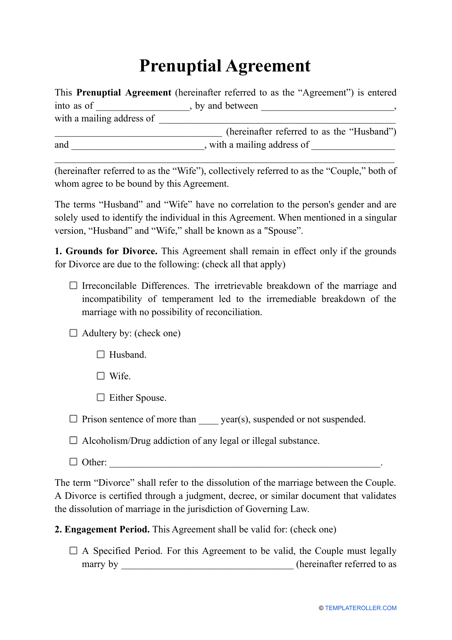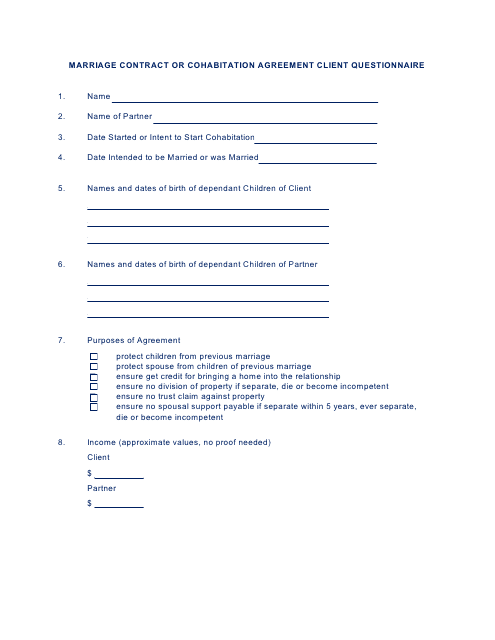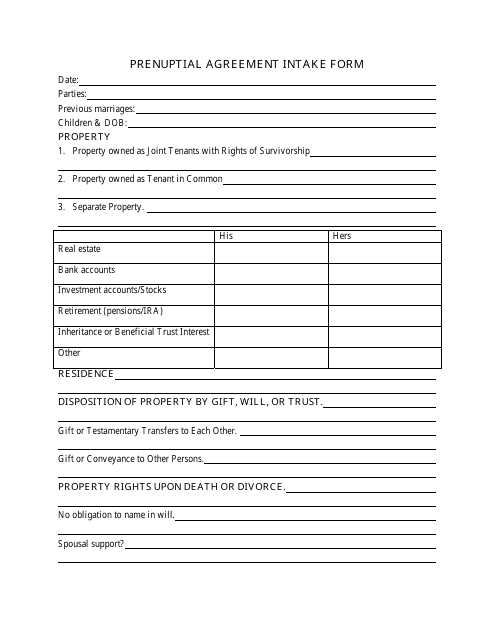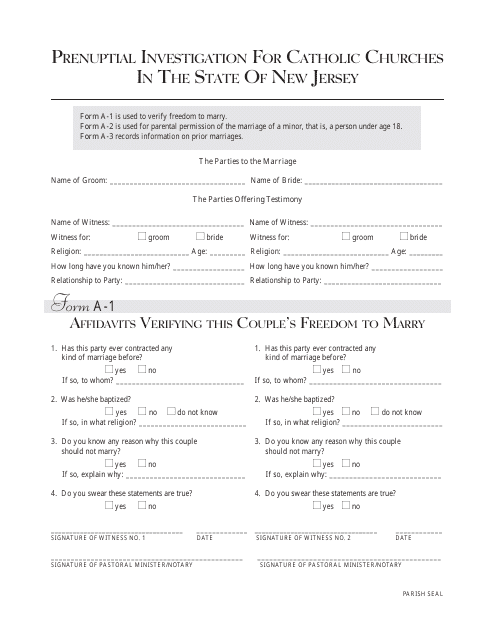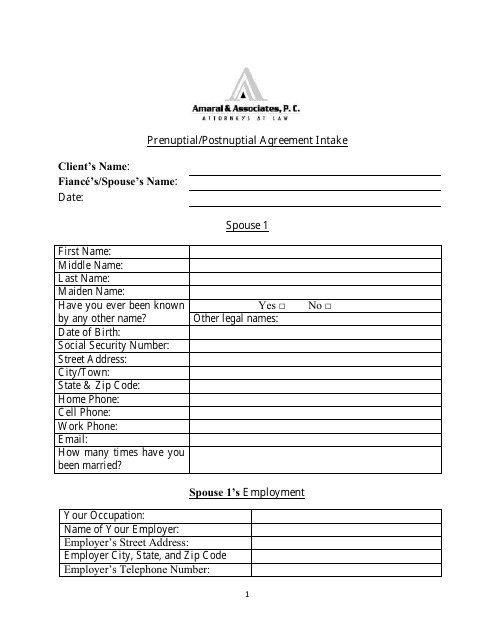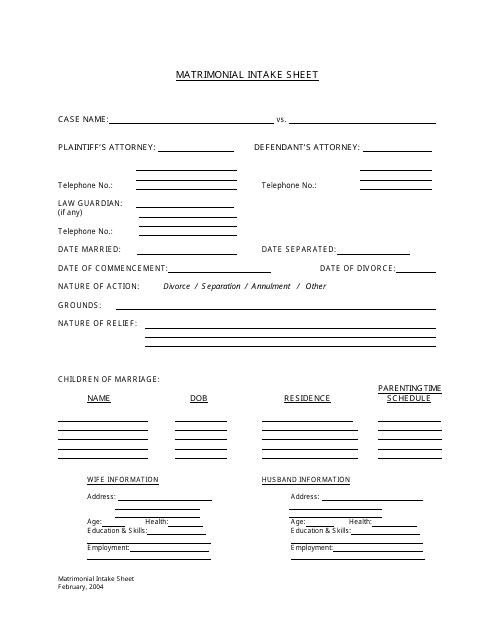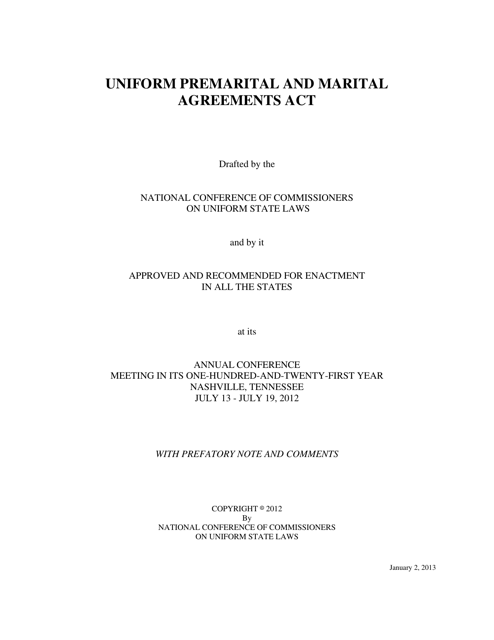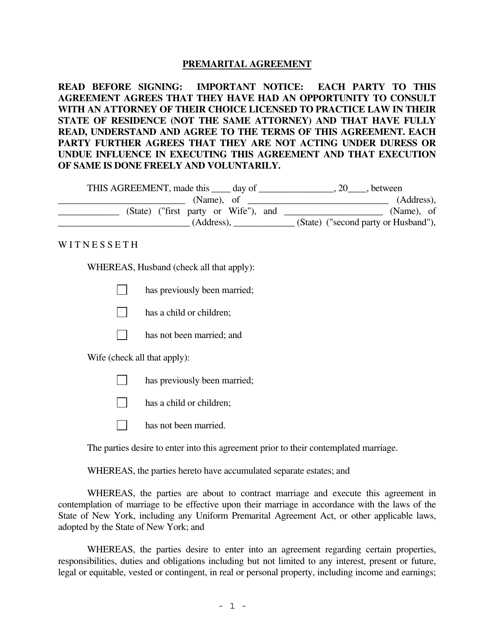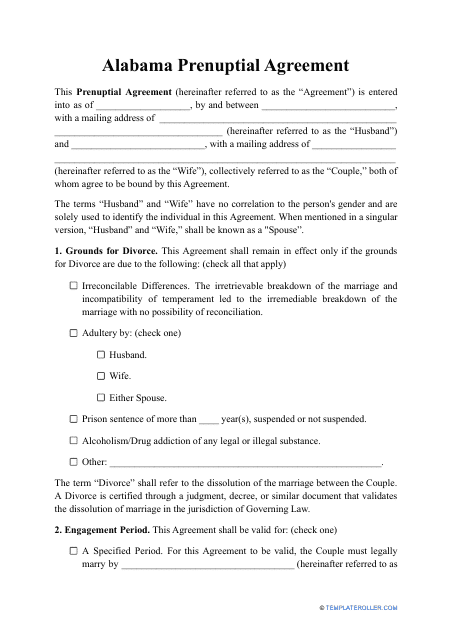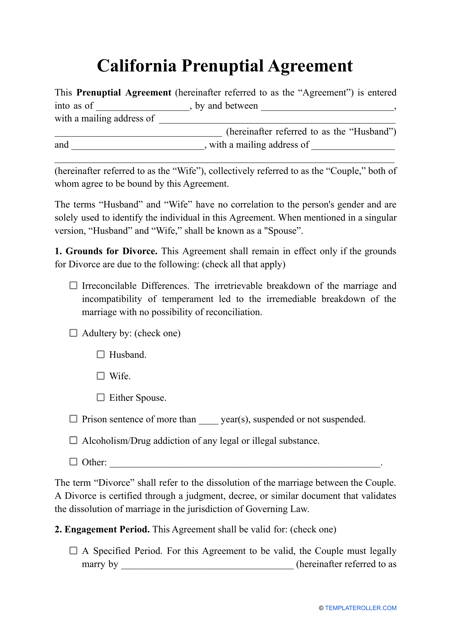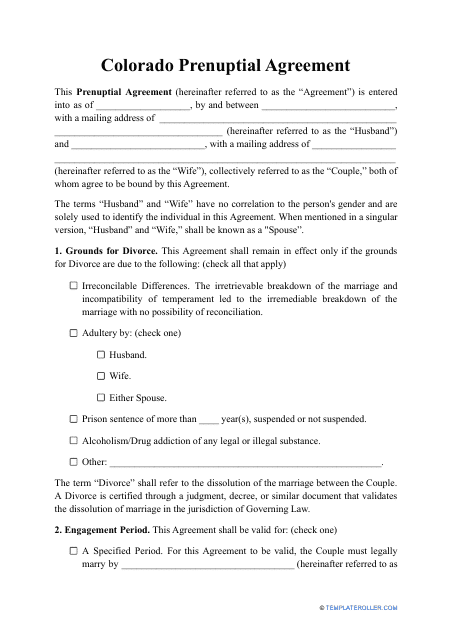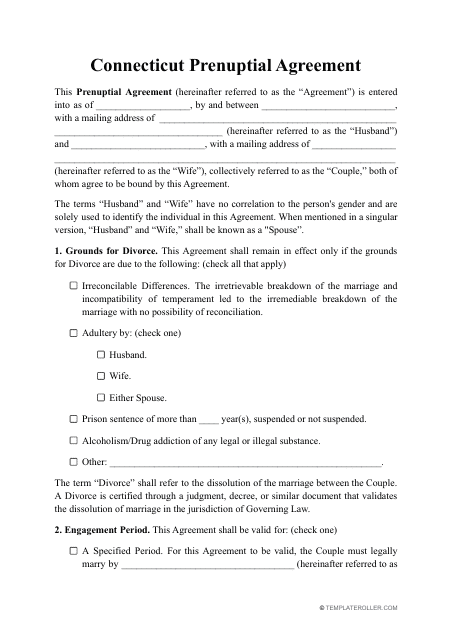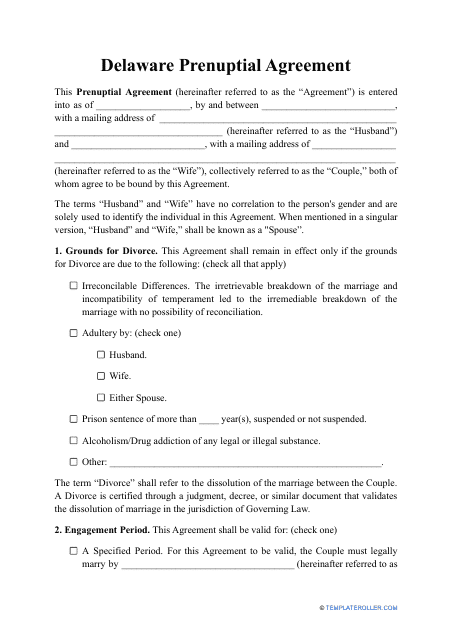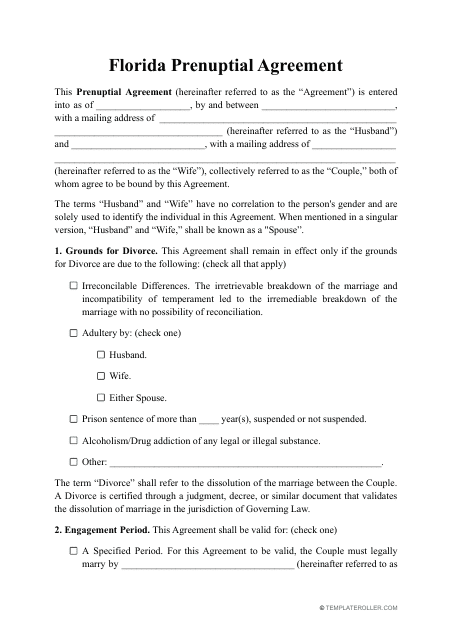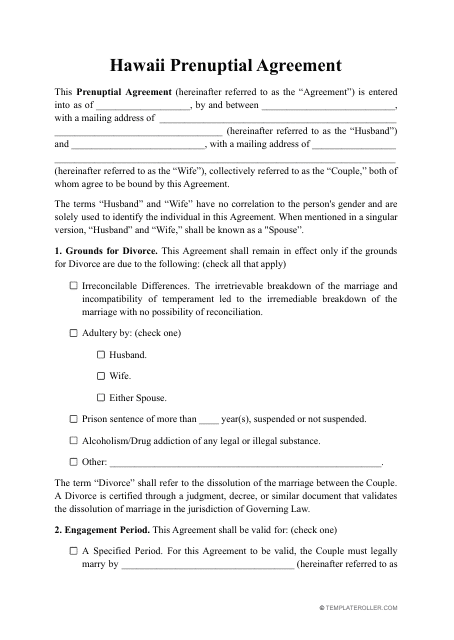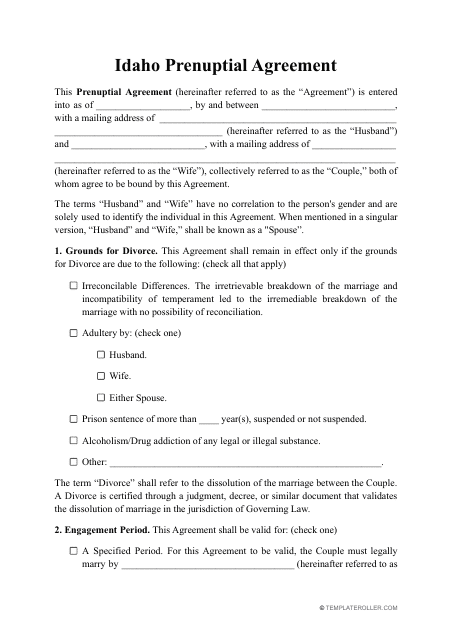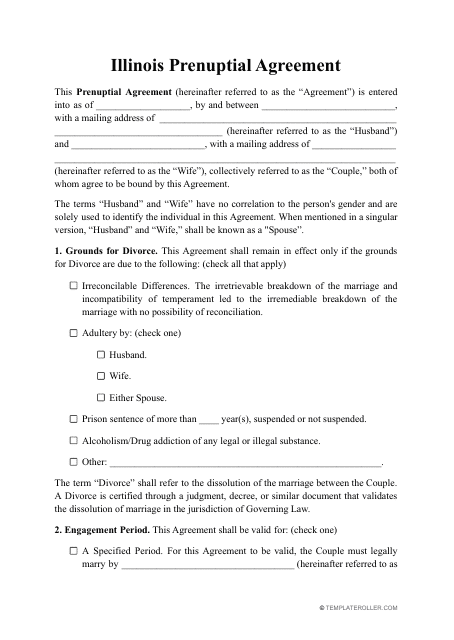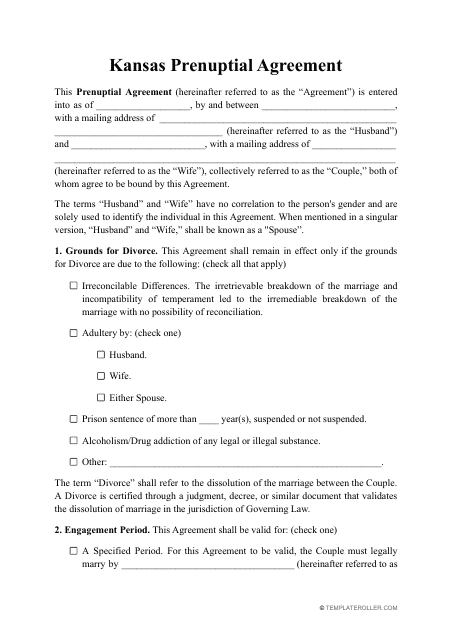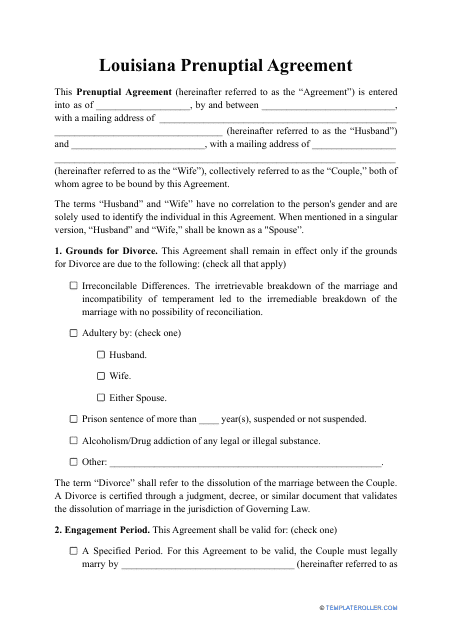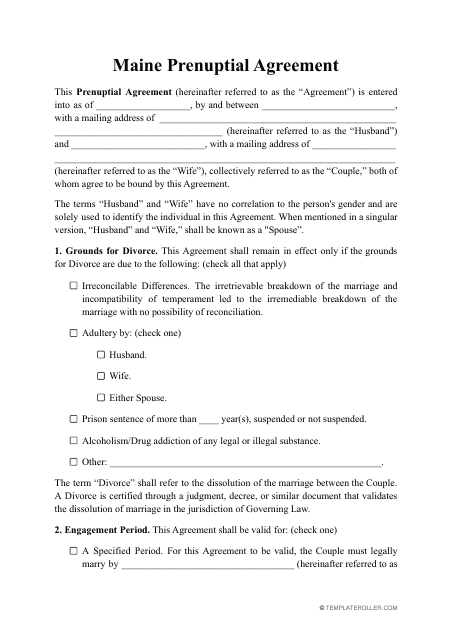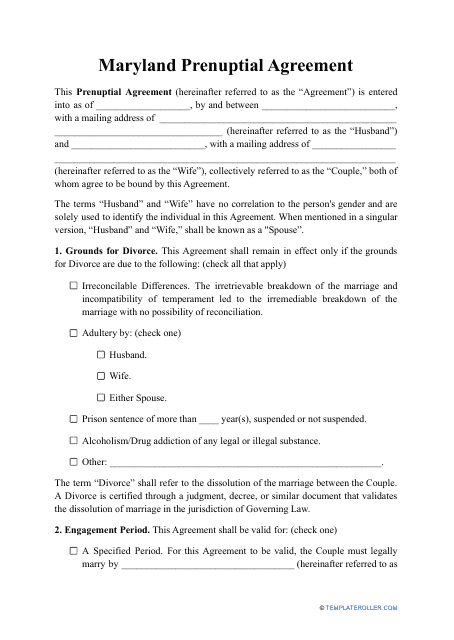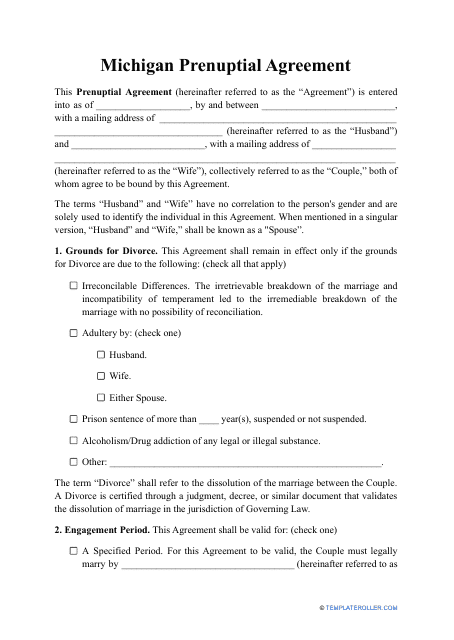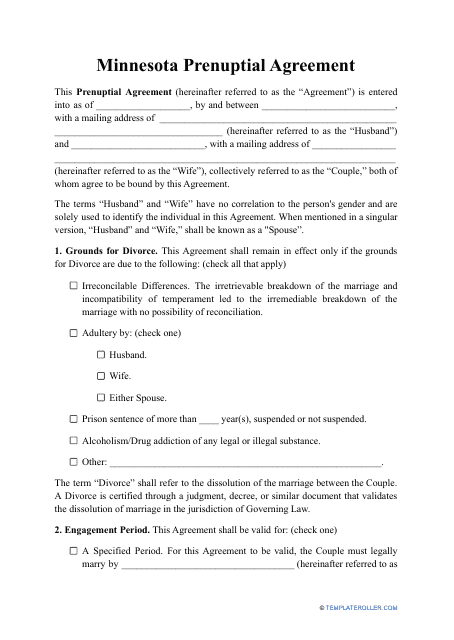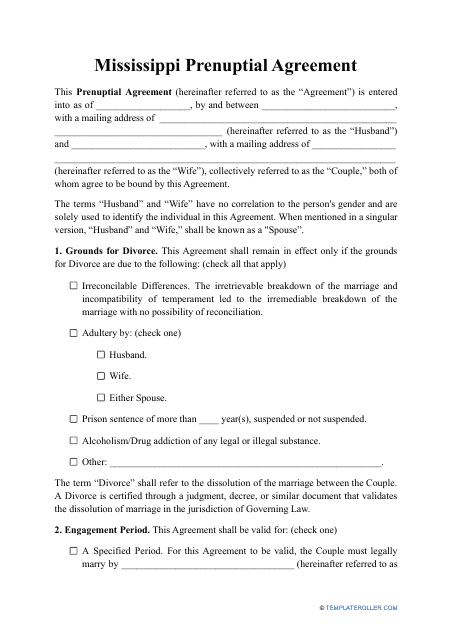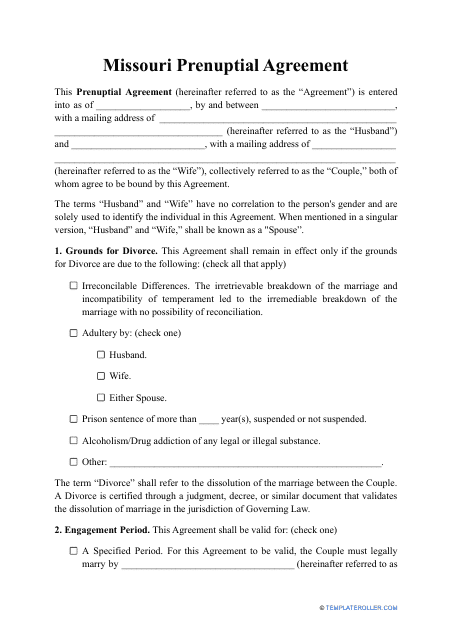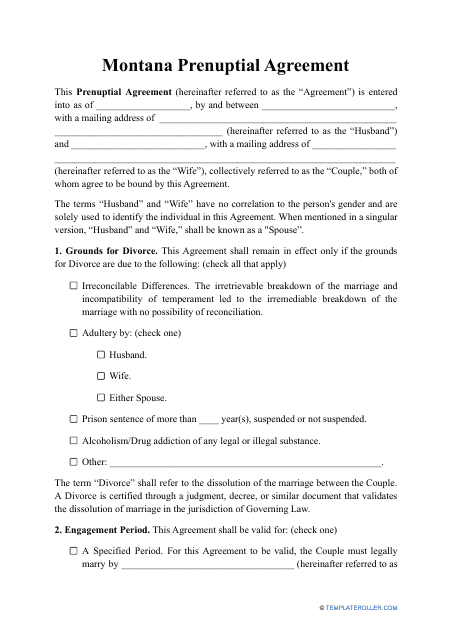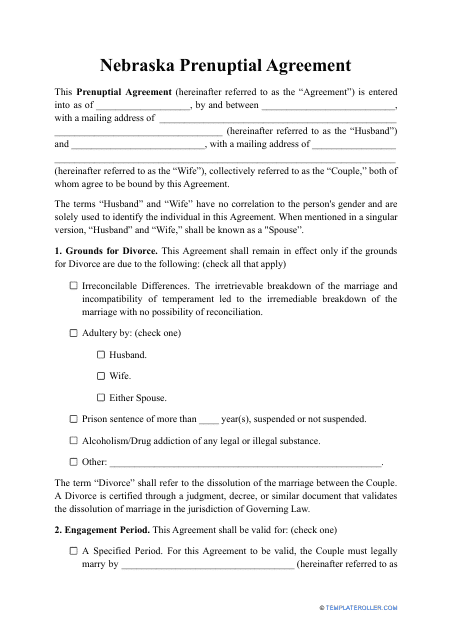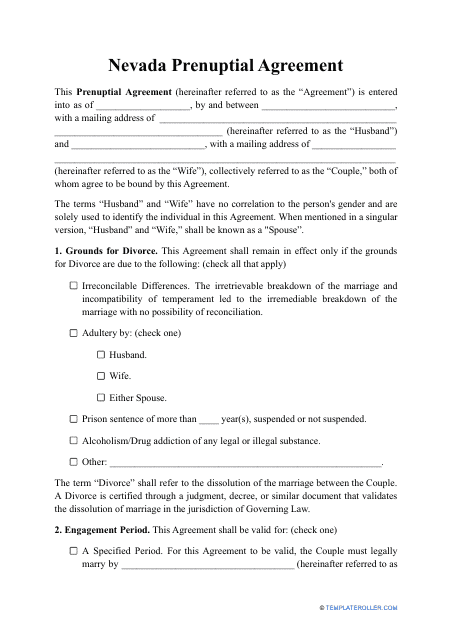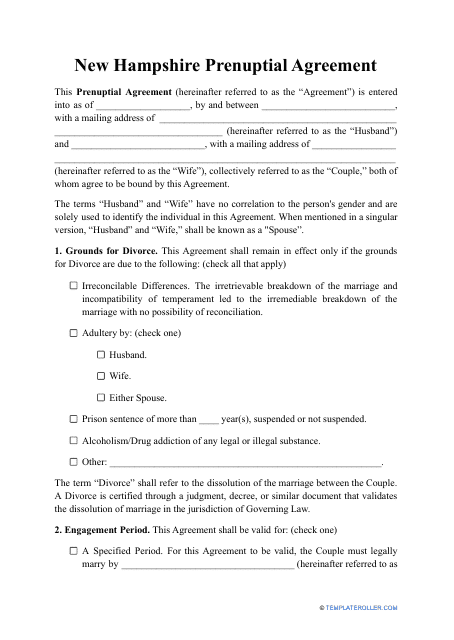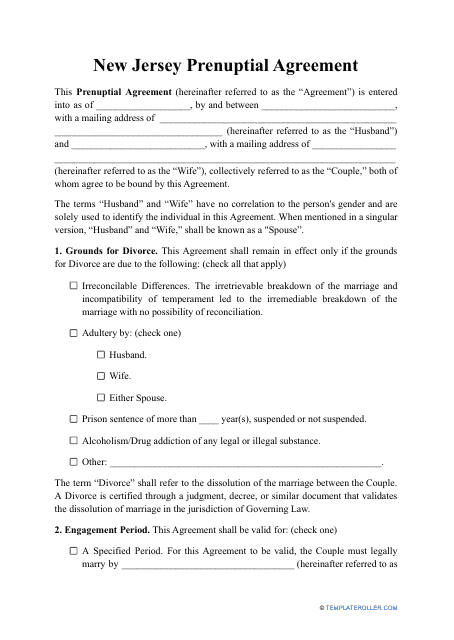Prenuptial Agreement Templates by State
What Is a Prenuptial Agreement?
A Prenuptial Agreement is a contract signed by two individuals before marriage. This contract determines how property, assets, debts, and spousal support is to be handled should there be a divorce or death.
Alternate Names:
- Prenup;
- Prenup Form;
- Prenup Agreement.
This document is used for creating a legally binding agreement between two individuals before they get married, outlining the division of assets and liabilities in the event of a divorce. A prenuptial agreement template provides a framework for couples to customize and create their own agreement.
Although there is a stereotype to link a marital agreement to wealthy people, it is oftentimes other conditions that persuade the parties to outline financial responsibilities and expectations they have of their marriage. These conditions may include any of the following:
- Children from the previous relationship/s;
- Inherited assets or money gifted by the party’s parents;
- Property/bank accounts and/or debts that they would like to keep separate;
- Agreement on who pays mortgage/rent/utility bills;
- Agreement on family roles, for example, a decision that once there are children, one of the spouses will stay home and care for the children;
- Protection in case of a betrayal, especially if there is a worry one of the spouses may cheat.
Or course, state divorce laws determine what constitutes marital assets. The difficulty lies in the fact that the law does not establish what belongs to whom, or whether the asset was acquired before or after the marriage. A marriage agreement allows to avoid needless and costly litigation in many cases. Naturally, like any contract, it may be disputed in court. However, a well-crafted prenuptial agreement can substantially reduce the scope of the court battle.
Browse the prenuptial agreements templates provided below for a ready-made sample of your premarital agreement.
Prenup Templates by State
When it comes to family law, its enforcement, and decisions on the validity of prenup agreements, each state has its own legislation and practices. Sometimes confusion arises as to which state’s law applies. It may be in cases when the parties come from different states, or they moved, or it may depend on the location of their marriage. One easy solution is to include a clause in your agreement specifying which law is to be applied in your case.
What to Include in a Prenup?
When you marry you may spend two or twenty years with the same person, so there are issues to watch out for. The parties to be married work out the terms and conditions of their marriage plan together. This includes their obligations towards each other during the marriage and after, should the marriage come to an end.
The terms of the document normally cover the following areas:
- Property and Assets. Enlist all of the property you currently owe and discuss who would like to take care of it while you are married and how you would like to divide it in case you separate. Make sure you put on paper what exactly can be the subject of a possible dispute in the future. Although a usual practice is that everybody gets to keep what was acquired before the marriage, it is best to specify what is the shared property that is subject to the division after the marriage. This clause is all the more important if there is inherited property or plenty of assets involved.
- Debts and Mortgages. The clause about indebtedness adds provisions for any debts the couple brings into the marriage or any debts they anticipate. The options are to keep the debts separately or divide them between the two, or it is one of the spouses that takes over the debt incurred by the other spouse. This is also a place where you can decide how liability for debts will be distributed between you two, i.e. how you will share responsibilities for the handling of your shared debt during the marriage and in case it dissolves.
- Marital Residence. Most times the parties begin or continue to live together after they get married, however, in some cases a different option is preferred. For example, one or both parties may be forced to travel for work or live in a different state/country for a prolonged period of time. This clause allows for outlining duties and financial obligations related to co-habitation. It may be changing the existing lease or property deeds, payment of expenses due to the marital residence, as well as any shared living expenses. You may decide whether you maintain separate bank accounts or opt to have a joint bank account that you both contribute to. You may choose to have one credit card for two, but one person to take care of the payments, while the other managing the household. A template has arrangement clauses as options, but it allows you to come up with your own unique arrangements.
- Children. Naturally, it is the most important part of the agreement, as most court battles start and end with child-related issues. If you or your spouse has children from a previous relationship, you can outline what worries you in this section. This section of your agreement gives you the possibility to create a plan that ensures your children are taken care of materially. This clause goes over issues like the home, support for all the children involved, and if that support should continue in case the marriage ends. If you have plans for having more children, this section may include custody arrangements in case you separate. It is wise to have a clause in this regard even if you do not plan any children, but there is a chance that they may appear anyways.
- Spousal Support. The contract outlines the current situation and defines conditions that provide for the alimony, i.e. money paid by one spouse to the other in case of a divorce. This clause also includes any pension plan money that will be shared after the divorce, the amount of time the alimony will continue and the amount. This clause is particularly important if the couple agrees that one of the spouses will stay home for any reason. Keep in mind, however, that this part of the prenup is particularly vulnerable to being revoked by the judge, as there are too many variables that you may not foresee at the time of marriage. Most states have a limit on how much a person can pay in alimony, so if your spouse is still paying spousal or child support to his/her previous partner, the judge may order a reduction of time or amount of the support payable to you. Normally, a person cannot be ordered to pay over 50% of their income at risk of destitution.
Finally, you may include provisions for matters that you find unique to your situation.
Can a Prenup Be Voided?
A prenuptial contract can be overruled (i.e. ruled invalid) or canceled in some cases, such as one of the following:
- If one party failed to disclose their assets and financial information to the other party (full disclosure);
- In case there is evidence of fraud;
- In case there is evidence of duress or unfairness;
- If the contract was signed involuntarily (under pressure);
- If the rights of the children are affected.
For the matter of fairness, and to avoid a situation where your contract is challenged in court, it is advisable for each party to have their own attorney or to sign the paper in front of the attorney. It is recommended to complete the contract at least a month before the wedding to allow for a reasonable amount of time to review the completed agreement before the commitment. Do think as far as you can in terms of fairness. What seems like fair now may not be considered fair 20 years later when the circumstances change and you have 5 children to send to the university.
Although you are not expected to file your document, keep it in a safe and secure location such as a safe, safety deposit box, or with your attorney.
There are pros and cons to signing a premarital contract. As with any plan, it may simply not work out for you. It may be unnecessary or too early. And of course, the question of even bringing up the issue of signing a prenup raises the question of “trust”.
If your or your partner’s circumstances change, such as one of you loses your job, becomes bankrupt, injured or cannot fulfill your financial obligations for any other reason, you may decide to write an amendment to the agreement. In this document, you can add, delete, or rewrite sections of your agreement as it suits your current situation.
Haven't found the template you're looking for? Take a look at the related templates below:
Documents:
78
This document is used to gather information from clients who need assistance with a marriage contract or cohabitation agreement. It helps lawyers or legal professionals understand the specific details and requirements of the clients' situation in order to draft an appropriate agreement.
This form is used for gathering information needed to create a prenuptial agreement.
This document is used for conducting a prenuptial investigation for Catholic Churches in New Jersey.
This document is a template for an Islamic Marriage Contract. It outlines the terms and conditions of the marriage agreement according to Islamic traditions.
This form is used for gathering information required to prepare a prenuptial or postnuptial agreement.
This document is used for gathering information about individuals seeking a potential spouse in New York. It collects important details related to personal background, preferences, and expectations.
This document is the Uniform Premarital and Marital Agreements Act, which was created by the Uniform Law Commission. It provides guidelines and regulations for premarital and marital agreements, outlining how these agreements can be legally valid and enforceable. It is a standardized document that aims to ensure fairness and clarity in such agreements.
This document is used for creating a premarital agreement between two individuals before they get married. It outlines the rights and obligations of each party in the event of a divorce or separation.
This document provides a checklist for creating a premarital agreement.
This is a legally binding document used in Alabama to determine the rules a soon-to-be-married couple will follow while they are married and upon their formal separation.
This template is a formal contract used in Alaska by a couple before getting married to outline certain rules regarding their cohabitation and decide what to do in the event of separation and divorce.
In the event of a future divorce, a couple may legally divide their assets and obligations through the use of this agreement in the state of Arizona.
This is a legally binding agreement used in Arkansas by two people before getting married that outlines and divides their respective possessions and finances.
This template is used in California and is formal acknowledgment of a person's assets and financial obligations which is discussed and explained before the marriage between two individuals.
This is a legally binding document used in Colorado to determine the rules a soon-to-be-married couple will follow while they are married and upon their formal separation.
Before getting married, a couple residing in Connecticut should sign this template to outline all of their assets and liabilities in order to determine how they will be divided in the event of a divorce.
This template is a legally binding contract used in Delaware before partners get married in order to establish mutually beneficial rights and responsibilities related to financial matters and household duties.
This is a legally binding document used in Florida to determine the rules a soon-to-be-married couple will follow while they are married and upon their formal separation.
This template is used in Georgia and refers to a formal document created by partners to protect their rights before entering a marriage.
This template is a formal contract used in Hawaii by a couple before getting married to outline certain rules regarding their cohabitation and decide what to do in the event of separation and divorce.
This is a legally binding template that is used in Idaho and approved by a couple before their marriage in order to define their mutual rights and responsibilities.
This is a legally enforceable document that is used in Indiana and signed by soon-to-be-married individuals to determine the right legal course of action in various instances.
This is a legally enforceable document used in Iowa by a soon-to-be-married couple in order to determine how they are supposed to act in various legal situations.
This is a legally binding document used in Kansas to determine the rules a soon-to-be-married couple will follow while they are married and upon their formal separation.
This is a formal document used in Kentucky by future spouses to outline the arrangements they make for their marital relationship.
Two people who intend to be married in Louisiana may use this template to help divide their assets in the event of a death or divorce.
This template is a formal contract used in Maine before getting married to outline certain rules regarding a couple's cohabitation and decides what to do in the event of separation and divorce.
This is a document used in Massachusetts that a partner signs before being married to specify how their properties and other financial assets will be divided if their marriage ends.
This is a legally binding document used in Michigan to determine the rules a soon-to-be-married couple will follow while they are married and upon their formal separation.
Whenever a couple living in Minnesota decide that they want to safeguard their assets from a marriage ending in divorce or death, they can utilize this template to specify how property and other assets should be handled.
This is a legally binding document used in Mississippi to determine the rules a soon-to-be-married couple will follow while they are married and upon their formal separation.
This is a document used in Montana that a pair drafts before marriage or before entering into a civil partnership.
This template is a formal contract used in Nebraska by a couple before getting married to outline certain rules regarding their cohabitation and decide what to do in the event of separation and divorce.
This template is made prior to two individuals officially marrying in Nevada and the purpose of the document is intended to specify how any estates or other assets will be split in the case of divorce or the passing of either spouse.
This template is used in New Hampshire and determines the way in which the belongings and estates of a married couple will be distributed in the event of a separation or death of either spouse.
This template is created by a couple in New Jersey prior to getting married to prepare for potential separation or spousal death.

